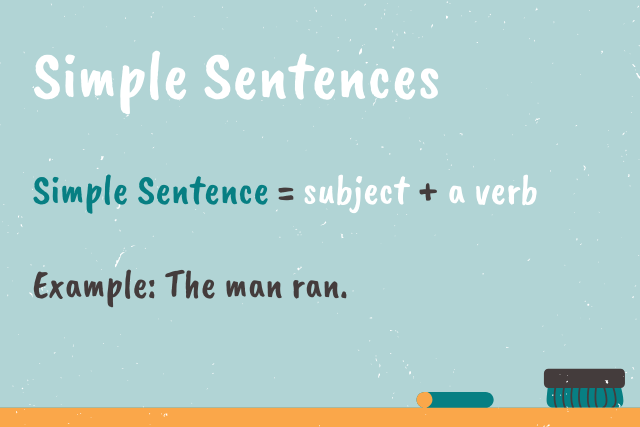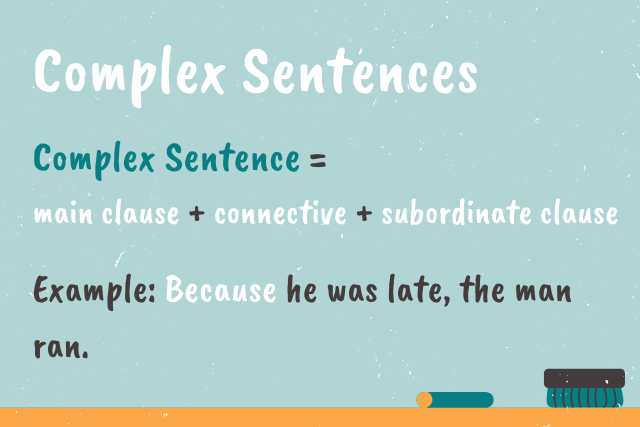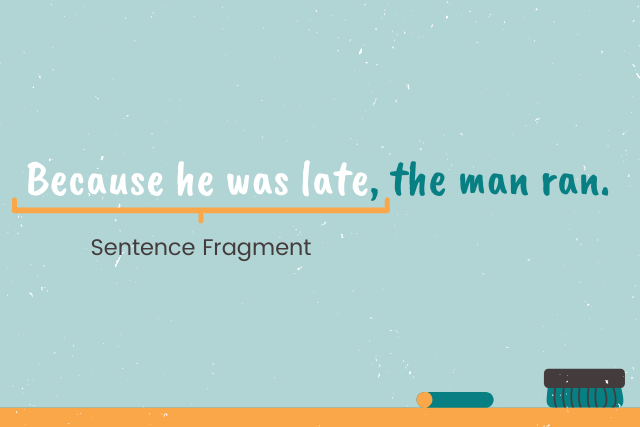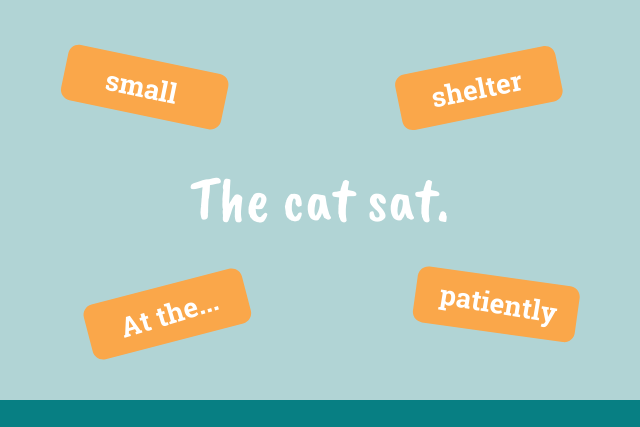
It’s frustrating when we’re teaching writing to get our students away from their over-reliance on simple sentences. They often sound repetitive and always start with the subject. Attempts to get students to expand their sentences can result in them awkwardly adding long lists of adjectives.
So how can you help your students not only expand their sentences, but do so effectively? These tips aren’t just simple activity ideas. Instead, they help you think of fresh ways to teach sentence writing, so your students can be purposeful and make changes for impact rather than just adding more words.
What Are Expanded Sentences?
Expanding a sentence means adding one or more words to the main clause to provide extra detail. It could be a few words, a phrase, or multiple clauses.
Without a good understanding of sentence types, it’s hard for students to understand the possibilities available to them.
These are the three sentence types we teach:
1. Simple sentences

Download this factsheet for your classroom here.
A simple sentence is an independent clause (main clause) that must contain a subject and verb. Other words such as adjectives, adverbs, and prepositions can be added.
- Example: The man ran.
2. Compound sentences

Download this factsheet for your classroom here.
In a compound sentence, two simple sentences are joined with a conjunction (or semi-colon) to make one sentence.
- Example: The man ran but he was still going to be late.
We can separate compound sentences into independent clauses. Each one could stand on its own as a sentence.
3. Complex sentences

Download this factsheet for your classroom here.
In a complex sentence, a dependent clause is added to the main clause using a subordinating conjunction. There are many to choose from, but when, if, that, and because are most common. Dependent clauses can be added to the beginning or end of the main clause or embedded within it.
- Example: Because he was late, the man ran.
When complex sentences are separated, the dependent clause is a sentence fragment. It would not make sense by itself.

When Should We Teach Students to Expand Sentences?
Start as early as possible. Children should learn that writing is fun and there many ways to form sentences. You could talk about word order when modelling a writing task and ask students to suggest ideas of adjectives, prepositions, and adverbs to add in to expand noun phrases.
From the start, children need to see that sentences aren’t fixed things. They can be played with, cut up and reordered, and added to. Don’t teach this separately. Embed sentence-level work within writing units so your students can see the purpose and immediately apply it to their own writing.
Children (and many adults too!) often think that "good" writing means writing lots. They "improve" their work by adding more and more sentences, even if they are boring, unnecessary, and repetitive.
Explicitly teaching students how to expand sentences lets us focus on one small section of their writing to see how it can be improved. It’s far better for them to craft one outstanding paragraph than write pages of meaningless writing. Just a few simple changes can have a big impact.
Using Our 3 Tips
So how can you teach your students to expand sentences effectively?
Before we look at the three tips, you should know that their effectiveness will rely on you making sentence-level work a priority when planning. If your units of work are packed full of objectives to cover, you’ll never have enough time to let your students truly explore.
Look at how much you’re trying to do. What can wait? Where are there duplications? Reduce how much you try to cover at one time to carve out time for sentence-level activities.

Tip 1: Be Playful with Language
Students easily become fixated with getting their writing "perfect." In our drive to improve their writing skills, we can lose sight of how much fun writing should be. Take away the stress of perfection. Give students time to be playful and have fun with language to explore the possibilities.
If you model expanding sentences in different ways, your students will do the same. Let them experiment, like scientists in a laboratory. Your students can try different techniques to expand sentences, find out that they don’t always work, and try again.
One simple idea is to start with an independent clause and challenge students to expand it in as many ways as possible. For example, they could be more descriptive, create a sense of tension, or add explanatory details. They can take turns to add onto a previous idea.
Here’s an example:
- The cat sat.
- The cat sat and waited.
- The small cat sat and waited.
- The small cat sat and waited, as the last families made their selections.
- At the rescue shelter, the small cat sat and waited, as the last families made their selections.
Remind your students that expanding sentences doesn’t just mean adding more words to the end of the sentence. The cat sat could include a range of sentence starters that don’t put the subject of the sentence, the cat, at the beginning.
Another technique you can use is to sit your students back-to-back and ask one to describe a picture for the other to draw. Laugh together at how inaccurate the drawings are. Your students will quickly see that adding more detail will help with precision.
Make expanding sentences a game or practical activity so it’s a fun experience. You could write sentences on strips of colored paper and cut them up to add extra words, phrases, and clauses. Let them be creative and enjoy experimenting.

Tip 2: Teach Thoughtful Language Choices
Students find it hard to expand sentences effectively if they haven’t learned to evaluate their language choices. They rush to add in extra details without considering how they are doing it or the effect they want to create.
Start modelling with your own sentences and verbalise the decisions you’re making so students can see this isn’t a linear process. You might remove words and try different combinations. Choices need to be purposeful and strategic.
Ask them questions:
- What do you want to achieve?
- Will adding a word or phrase work or is a clause needed?
- What effect does this have on the reader?
- Could you create this same effect in a different way?
- Why this word and not that one?
Children often expand every sentence in the same way (usually with expanded noun phrases). Highlight where they are saying the same thing twice to eliminate unnecessary repetition.
Tip 3: Create Independent Opportunities
When we mark students’ writing, it’s easy for us to add the changes we want them to use. However, when we do the work for them, they never learn how to expand sentences themselves. Once they’ve read your feedback, they’re likely to return to their usual way of writing without learning how to improve.
Older students can easily learn to use ProWritingAid to improve their own writing. The reports are simple to use and have examples so they can choose whether to make a change. It will identify overused phrases and repeated sentence starters, and show them where they’ve just added unnecessary "filler" words.
Plan time for students to zoom in and focus on one particular paragraph, rather than trying to improve the whole composition at once. For handwritten work, they could highlight sentence types in different colors to see where they over-rely on simple sentences.
Encourage students to choose just one or two sentences that they think could benefit from expansion. This stops them thinking every sentence should be long and detailed.
How to Use ProWritingAid in Teaching Expanded Sentences
ProWritingAid helps students to identify areas for improvement. As they continue to use the tool, they’ll build their knowledge and skills, allowing them to spot these areas on their own.
They’ll be able to see how their documents shape up in terms of:
- Sentence length variety
- Sentence starts
- Adjectives, nouns, verbs, and adverbs used
- Repeated words and phrases
... and more!

The Sentence Length Report, shown above, allows students to visualize their sentence variation. They can hover over the bars to locate the corresponding sentence in their document, allowing them to jump to places that need breaking up quickly.
They’ll also see highlights and suggestions throughout their work, like this one for repeated sentence starts:

Each ProWritingAid suggestion is supported by simple articles and videos that will help students understand why they are making a change.
Using an editing tool like ProWritingAid facilitates critical thinking as students choose which suggestions to accept or ignore to make their writing the best it could be.
Final Thoughts
Most students won’t naturally expand sentences without support, modelled examples, and direct teaching of how to do it. Making this sentence-level work a priority when lesson planning pays off in the long run. The result is students who carefully create effective sentences rather than mindlessly adding additional words.


